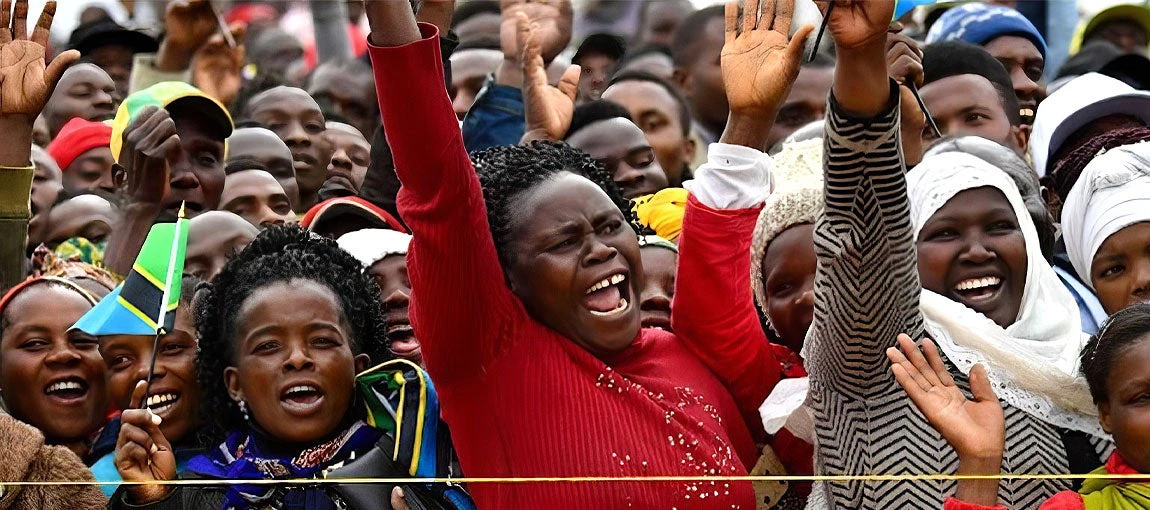 Photo by The Citizen Tanzania
Photo by The Citizen Tanzania
Originally published on March 13, 2024 by The Citizen, Tanzania
Fatuma was married at age 15 and had her first child, Hadija, after a year, causing her to drop out of school and start working as a farm laborer. The Fee Free Basic Education Policy was a blessing to Fatuma who did not want to give up on her education. It enabled her to go back to school. However, paying for other expenses such as her school uniform and caring for Hadija are a constant struggle. Fatuma is now worried that she may have to leave secondary school to support her family. Tanzania has many girls like Fatuma, who have children before turning 18 which severely affects their life chances. Having her first child early in life makes it more difficult for Fatuma to stay in school. It may trap her in a low-income job and deny her an opportunity to thrive in the future. Even worse, it could affect her daughter’s prospects of being well-educated and escaping poverty.
Policymakers around the world have been exploring prospects for attaining a demographic dividend : the economic benefit that ensues when a country undergoes a rapid decline in mortality, followed by a rapid decline in fertility, thus producing smaller, healthier families and a youth cohort that can be educated and empowered to enter the labor market. Our just-launched 20th Tanzania Economic Update: Overcoming Demographic Challenges while Embracing Opportunities, analyzes Tanzania’s prospects in this regard.
Tanzania has made strong progress on the road to a demographic dividend by reducing mortality and expanding education. Under-five child deaths have dropped substantially from 67 to 43 per 1,000 between 2015/16 and 2022/23. Lower secondary school (net) enrollment has increased from 24% to 38%. This trend could be accelerated further.
Although the national total fertility rate has decreased from 5.4 to 4.8 children per woman in the past 14 years, the average Tanzanian woman will have two more children in her lifetime than her counterpart in Kenya or Rwanda. With a current population of 61.7 million and fertility declining only gradually, Tanzania’s population is projected to expand to between 120 million (low fertility scenario) and 141 million (high fertility scenario) by 2050.
Furthermore, 22% of Tanzanian girls aged 15 to 19 have had a child or are currently pregnant. This indicates high adolescent pregnancy rates. Approximately 52% of 15–19-year-old girls who have ever been pregnant have no education, while 26% did not complete primary education.
Lowering adolescent fertility creates a positive circle of benefits by improving the life chances of adolescent girls. It can help to ensure that Fatuma and girls like her have a better life by attaining secondary education and developing skills that can help them find better jobs and contribute to Tanzania’s economic development. Investments in education, particularly girls’ education, also help reduce fertility levels, enabling more investment in the education, health, and nutrition of each child.
Shifting to a low fertility scenario could lift six million people out of poverty by 2050. Econometric models suggest that a low fertility scenario would mean an increase in per capita GDP to $3,337 or 11 % higher than a high fertility scenario.
Speaking at the Africa Heads of States Human Capital Summit in July 2023, President Samia Suluhu Hassan said, “Our continent is a continent with many children and young people. In demographic terms, this news is both good and bad for us. This situation can only be good and productive for us if we invest in human resources by ensuring good health, good education with life skills to create a productive workforce.”
Shifting to a low fertility scenario would reduce the costs of educating Tanzania’s population from the current 3.3 % of GDP to 2.9 % by 2061. Sustained high fertility rates will, by contrast, increase the costs of investing in human capital. Illustrating this point with education, the government would need to increase education expenditure from the current 3.3 % of GDP to 4.1 % of GDP by 2061 under the high fertility scenario.
Success and lessons from within Tanzania need to be amplified. Several regions like Dar es salaam and Kilimanjaro have already achieved lower levels of fertility. Adolescent fertility and early marriages are on a declining trend over the past five years, though slowly.
For Tanzania to benefit from its youthful population and reap a demographic dividend, it must accelerate the decline in fertility that is already underway, further reduce child mortality, increase investments in developing its human capital and create better economic opportunities for its young people. Two strategies are essential to accelerating the decline in fertility: scaling up access to high-quality and affordable family planning services and ensuring that girls complete secondary school and benefit from good economic opportunities.


Join the Conversation